
If you were born in the seventies, or before, and consider yourself a petrol head, you probably have implanted in the back of your retina, the sound, dance & flying tehcnique of the dangerous and dramatically overpowered Group B rally cars. In 1982, With power plants that peaked above 600hp, Group B cars were the epitome of hairy speed. Some people even saw them as too fast too race and vaticinated that disaster was just waiting around the corner. Unfortunately this did not take too long, as Toivonen’s fatal accident and the tragic destiny of three spectators in the Portuguese Rally, set the disappearance of these lovely monsters in 1986.

Among all of them hyperventilated creatures with huge turbos and enormous aerodynamic elements, the Audi Sport Quattro of 1984 is our favorite. The SQ had more power than any other rally car in history, reaching over 600 horsepower in 1986, needing huge wings to try to help the driver keeping it from being airborne, on the small backcountry roads that constituted its daily diet. The Audi was heavy & bulky and had to compete against many legendary purpose built racers like the peugeot 205 or the Lancias, which were lighter and had space age frames, but with its crazy 2.1 liter supercharged ‘five’ managed to kick them in the butt.

The 600 bhp only came at the expense of low-end grunt due to the turbo-lag. To counter this, the S1 was fitted with an anti-lag system that fed fuel into the turbo to keep it spinning even when the throttle was closed. The resulting bangs and exhaust-flames were immediate fan favourites. At some rallies, Audi also experimented with a ‘PDK’ dual clutch automatic gearbox, which you can hear on videos with a very distinctive … tee-tee-tee-titak … sound when approaching a corner.

The Sport Quattro started as an evolution of the heavy and too long Audi Quattro from 1981. The frame was chopped 320mm (12.6in) behind the doors addressing the length issue. Its windshield was also steeped to get rid off the problematic reflection of the sun in the dashboard, adding to its strange stance. With the engine still mounted ahead of the front axle, the short wheelbase Sport Quattro had massive overhangs that made for very strange proportions. Further weight was cut by replacing most of the steel body panels with lightweight composites like Kevlar and fiberglass and aluminum. To improve weight balance they moved the batteries, oil coolers and radiators into the rear of the car. The end result was a 52% front/48% rear weight balance, but still with a high polar moment (weight far from the center of gravity).

To comply with the Group B regulation requirement to build 200 units, Audi Priced the road version at a staggering 203,850 German Marks. The 300 bhp homologation special was introduced during 1983. By May 1st of 1984 the required 200 cars were constructed and the Sport Quattro was fully homologated. Audi’s new rally weapon was handed to an all-star driver line-up that included Hannu Mikkola, Walter Röhrl, Michele Mouton and Stig Blomqvist. But it was Blomqvist’s spectacular, very sideways, driving style that suited the Sport Quattro perfectly. By flicking the tail out, the Swede overcame the natural understeer of the nose-heavy Audi. He won five of the twelve rounds and was crowned the 1984 World Champion.

Audi also dispatched the Sport Quattro to the United States for the Pikes Peak Hillclimb. In 1984 Michelle Mouton became the first woman to win ‘The Race to the Clouds.’ In 1985 she repeated that feat in a Sport Quattro S1. With Group B cancelled in 1987, the competition at Pikes Peak was much stronger that year. Röhrl was handed a mildly modified Sport Quattro S1 with an even wilder bodykit. The turboboost was raised to produce a rumored 1000+ bhp. The German rally-legend won at his first attempt.
 Audi’s world rally program lasted less than five years but its influence can still be felt and remain as the most powerful rally car ever built.
Audi’s world rally program lasted less than five years but its influence can still be felt and remain as the most powerful rally car ever built.
READ MORE:
http://www.ultimatecarpage.com/car/610/Audi-Sport-Quattro-S1.html
http://www.youtube.com/watch?v=7AQmgeMoM0A
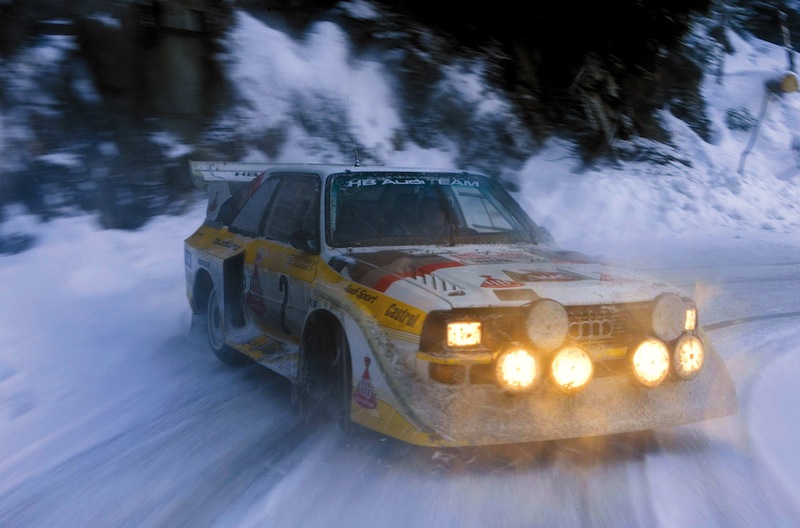
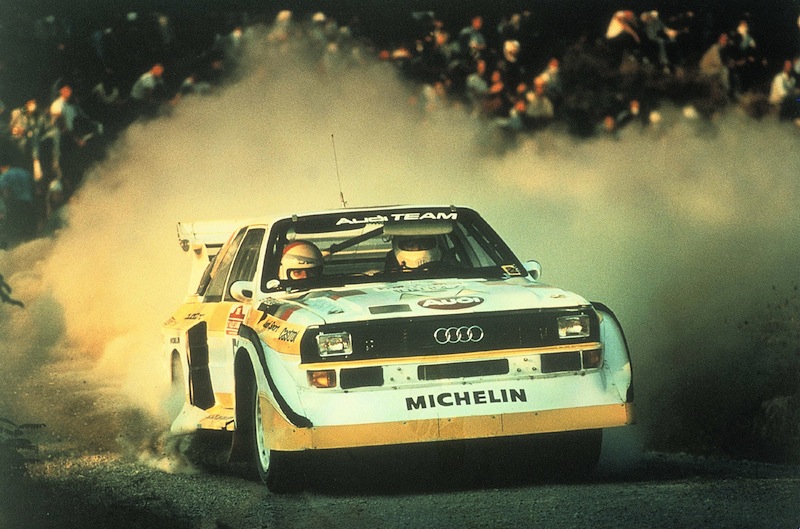
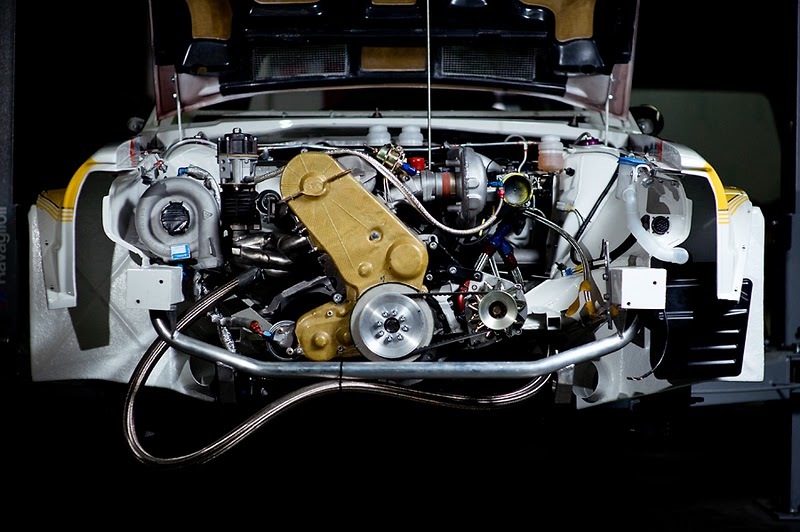
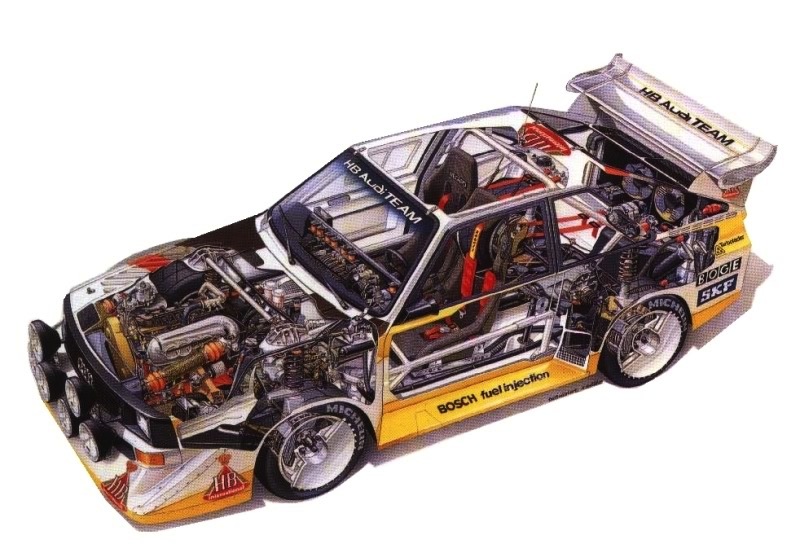
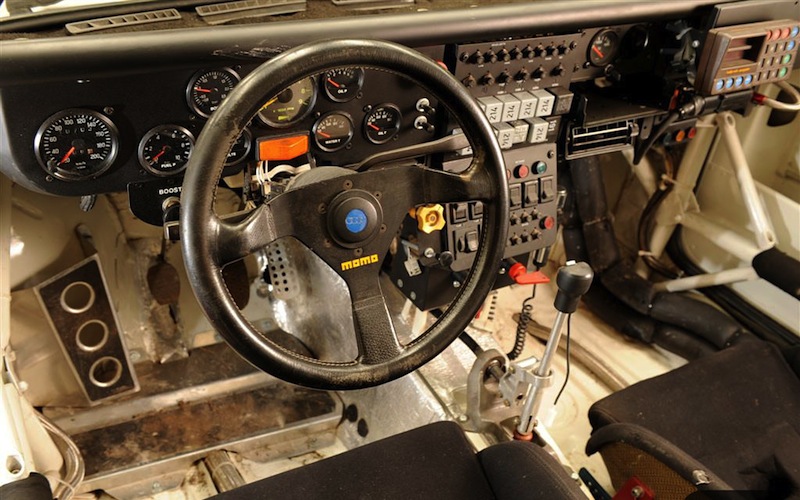

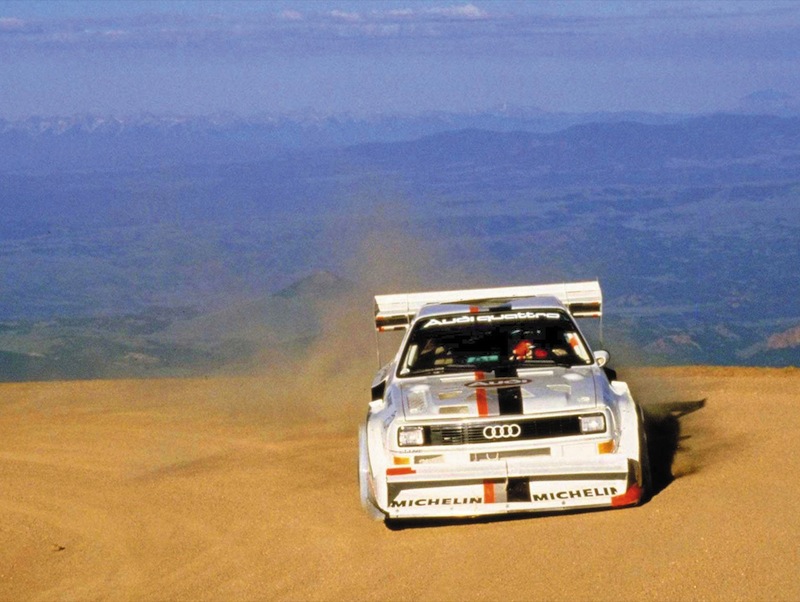 Audi’s world rally program lasted less than five years but its influence can still be felt and remain as the most powerful rally car ever built.
Audi’s world rally program lasted less than five years but its influence can still be felt and remain as the most powerful rally car ever built.